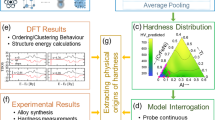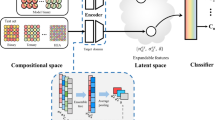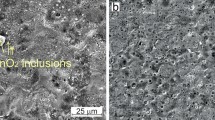Abstract
MOST bearing alloys consist of a matrix of a soft metal in which are distributed uniformly small crystals of a harder metal. Such a structure has been found by long experience to possess the most satisfactory mechanical, frictional, and low-wearing properties. It is usually supposed that the hard constituent carries the load, while the soft matrix serves to distribute the pressure uniformly and to embed abrasive particles in the lubricant1. The hard phase also stands out in relief from the soft phase at room temperature, and such a surface of minute hills and valleys is often said to possess desirable lubricating qualities. On account of the higher thermal expansion of the softer constituent, Kyropoulos2 states that the latter is able to take the load at higher temperatures, that is, under running conditions. On the other hand, the opinion has been expressed3 that a single soft metal constitutes as efficient a bearing as the conventional structure of hard crystals in a soft matrix. In actual practice, of course, a variety of different bearing alloys are used depending on the conditions of sliding. When the conditions are severe, as at high speeds and high and varying loads, only certain types of alloy structure can be used with success, and the homogeneous metal is unsatisfactory. It does therefore appear that a heterogeneous structure possesses definite advantages for bearing metals.
This is a preview of subscription content, access via your institution
Access options
Subscribe to this journal
Receive 51 print issues and online access
$199.00 per year
only $3.90 per issue
Buy this article
- Purchase on SpringerLink
- Instant access to full article PDF
Prices may be subject to local taxes which are calculated during checkout
Similar content being viewed by others
References
See, for example, Bassett, H. N., "Bearing Metals and Alloys" (Arnold and Co., London, 1937), Chapter 3.
Kyropoulos, S., Refiner and Nat. Gas. Mfr., 19, 85 (1940).
Goodman, p. 81 in ref. 1.
Bowden, F. P., and Leben, L., Proc. Roy. Soc., A, 169, 371 (1939).
Evans, H. L., and Harrison, S. T., Chem. and Ind., 58, 122 (1939). Wood, E., and Harrison, S. T., private communications.
Author information
Authors and Affiliations
Rights and permissions
About this article
Cite this article
HEATON, J., BRISTOW, J., WHITTINGHAM, G. et al. Frictional Properties of Bearing Metals. Nature 150, 520–521 (1942). https://doi.org/10.1038/150520a0
Issue date:
DOI: https://doi.org/10.1038/150520a0
This article is cited by
-
Frictronal Properties of Metallic Films
Nature (1943)
-
Letter to Editors
Nature (1943)
-
Frictional Properties of Metallic Films
Nature (1943)
-
Frictional Properties of Metallic Films
Nature (1943)



